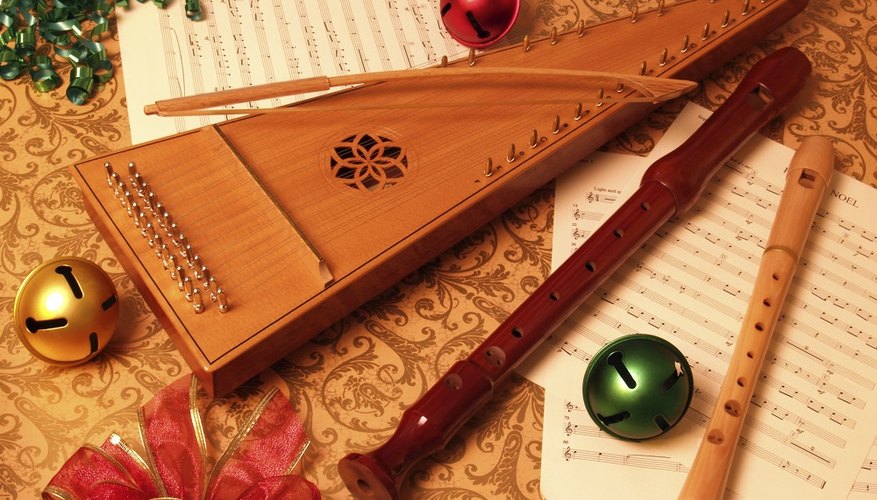Christmas was one of the most important and sacred holidays on the calendars of medieval Christians. Christmas was a time of spiritual reflection, as well as a festive occasion marked by feasting and gatherings. Christmas decorations during the medieval era focused on symbolism associated with the story of Christ's birth, although there was an underlying pagan aspect to decorating left over from the time before Europe adopted Christianity.
Nativity Scenes
First appearing in 10th century Rome, nativity scenes were commonplace in most upper class households in the Middle Ages. Originally painted on folding screens called triptychs, later medieval nativities were sculpted from marble, clay or wood. Sometimes realistically painted, they were costly and not widely available. Romanesque or Gothic-style nativities are evocative of the era, bringing an authentic feel to medieval-inspired Christmas decor.
- First appearing in 10th century Rome, nativity scenes were commonplace in most upper class households in the Middle Ages.
- Originally painted on folding screens called triptychs, later medieval nativities were sculpted from marble, clay or wood.
Greens
Holly, mistletoe, ivy and pine boughs graced even the humblest medieval households at Christmastime. Among the most popular and widespread medieval Christmas decorations, greens date back to pre-Christian times in Europe, where they were part of solstice celebrations. Wreaths, swags and garlands are still popular and widely available today, making them an inexpensive and historically accurate addition to medieval-inspired Christmas decorations.
Frankincense and Myrrh
Drawn from the tale of Christ's birth, frankincense and myrrh were prominently displayed in the homes of wealthy people during the Middle Ages. Once prohibitively expensive, the two precious tree resins were presented to the baby Jesus at his birth and were later often placed in or near nativity scenes. Housed in elaborately carved trunks, the resins were also burnt as incense and thrown into the fireplace to perfume the smoke. Today, frankincense and myrrh are readily available at import stores and are an effective way of lending atmosphere to homes decorated in the medieval style.
- Drawn from the tale of Christ's birth, frankincense and myrrh were prominently displayed in the homes of wealthy people during the Middle Ages.
- Once prohibitively expensive, the two precious tree resins were presented to the baby Jesus at his birth and were later often placed in or near nativity scenes.
Apples and Nuts
Apples and nuts held great symbolic meaning for medieval Christians, representing the Virgin Mary and baby Jesus, as well as fertility. Because apples and nuts are plentiful during harvest, medieval people collected them in large quantities to store through the winter. During Christmastime, they were placed in chalices and bowls around the house as a symbol of hospitality and plenty, where guests were free to eat them at leisure.
Ornaments
Although Christmas trees were not a custom during the Middle Ages, ornaments were still made and hung on garlands and wreaths. Clove-studded fruit, called pomanders, were a common ornament during the medieval era. Oranges imported from southern Europe were a popular choice for the wealthier classes, as well as apples and pears. Hung by a decorative ribbon, pomanders are appropriate to hang on Christmas trees to give them a medieval feel. Braided straw ornaments were also sometimes added to wreaths and garlands. Made from dried wheat straw or grass, intricately woven or braided ornaments were made in the shape of stars, spirals or loops.
- Although Christmas trees were not a custom during the Middle Ages, ornaments were still made and hung on garlands and wreaths.
- Clove-studded fruit, called pomanders, were a common ornament during the medieval era.
